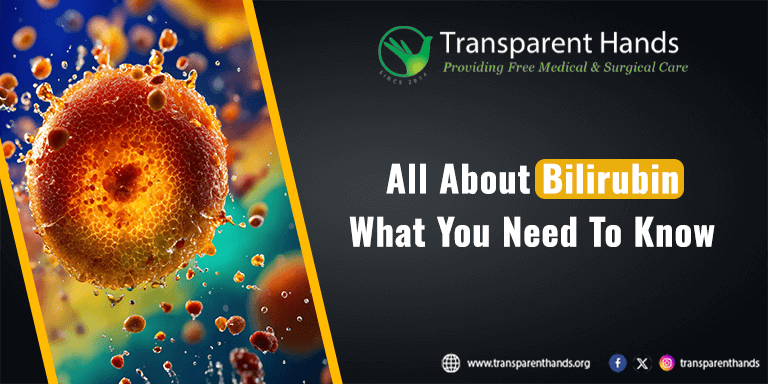All About Bilirubin Levels: What You Need To Know

We’ve all heard about blood tests and the various components they measure. One of the elements is bilirubin – an often overlooked and unfamiliar component that plays a critical role in our health, especially in blood and liver functions. While its name might carry an air of scientific complexity, this compound plays a crucial role in gauging the health status of our liver and blood.
In this blog, we will dive into the world of biology and explore bilirubin’s functions, delve into the measurement processes, and interpret the signals conveyed by abnormal levels. Prepare to learn about the nuanced world of bilirubin, as we embark on this informative journey.
Benefits of Folic Acid for Women and Men
Getting to Know Bilirubin
Before diving into the details, let’s break it down. Bilirubin, a yellow pigment, is formed during the liver’s breakdown of red blood cells. It’s then processed to make it water-soluble for elimination. You might recognize the yellow hue in various contexts, from the color of bruises to the telltale sign of jaundice.
While the substance itself is a byproduct of red blood cells, research indicates that it may have some benefits as it makes its way outside of the body. According to current studies the chemical may provide cardiovascular benefits owing to its antioxidant properties. While it certainly does have benefits, an excess amount of bilirubin in the body can have a myriad of side effects too.
The Role of Bilirubin in Our Body
Bilirubin primarily exits our body through the gastrointestinal tract, excreted in bile – crucial for digesting fats and liver waste removal. In its essence, bilirubin exists in two forms inside the human body.
Types of Bilirubin
- Unconjugated Bilirubin: This is the initial form, produced when red blood cells break down. It needs liver processing to become water-soluble.
- Conjugated Bilirubin: Once the liver processes unconjugated bilirubin, it becomes water-soluble and is then excreted.
Measuring Bilirubin
While normal A blood test, known as the bilirubin test, reveals total bilirubin levels. Elevated levels might indicate liver or bile duct issues, increased red blood cell breakdown, or other medical conditions.
If you have ever wondered by patients with jaundice have a distinctly yellow tint to their eyes and skin tone, it is often because of high bilirubin that our outward appearance is changed. It’s associated with liver disorders or excessive red blood cell breakdown. Jaundice is usually the first signifier that prompts a medical practitioner to probe into a patient’s bilirubin levels.
What Abnormal Bilirubin Levels Might Mean
Like all diseases, an excess and a decline in chemicals inside the body can cause damage. Some more so than others. Let’s have a look at how different levels of bilirubin affect our bodies.
- Liver Disorders: High levels could signal conditions like hepatitis, cirrhosis, or liver disease.
- Bile Duct Obstruction: Blocked bile flow from the liver to the intestine can raise bilirubin levels.
- Hemolysis: Conditions accelerating red blood cell breakdown, like hemolytic anemia or certain medications, can increase bilirubin.
- Gilbert’s Syndrome: A benign genetic condition causing intermittent bilirubin elevations without underlying disease.
What About Low Bilirubin Levels?
Certain medications, like antibiotics, contraceptives, sedatives, and antiepileptic drugs, can cause reduced bilirubin levels. However, this typically doesn’t raise significant concerns.
Bilirubin in Newborns
Newborns often experience elevated bilirubin levels due to the immature liver’s limited ability to process it. While it may be alarming for new parents, this neonatal jaundice is generally harmless and often resolves on its own.
Managing Bilirubin-Related Concerns
Managing elevated bilirubin levels depends on the underlying cause. Addressing primary conditions, like liver disease or hemolysis, often helps normalize levels. In neonatal jaundice cases, phototherapy is a common and effective treatment.
Conclusion
Bilirubin, despite its association with health concerns, when elevated, is vital to our bodies. It plays a critical role in waste elimination and digestion.
To sum it up, it’s a byproduct of aging red blood cells, eliminated through the intestines. Surprisingly, ongoing research suggests potential antioxidant benefits, guarding against heart disease. However, excessive amounts can be harmful, causing discomfort and itching.
Abnormal bilirubin levels can indicate various underlying medical conditions, manageable with medical intervention. Regular check-ups and early diagnosis ensure prompt addressing of bilirubin-related issues, promoting optimal health and well-being. Understanding bilirubin’s function and implications is crucial for maintaining good health and managing potential health challenges effectively.










Leave a Reply